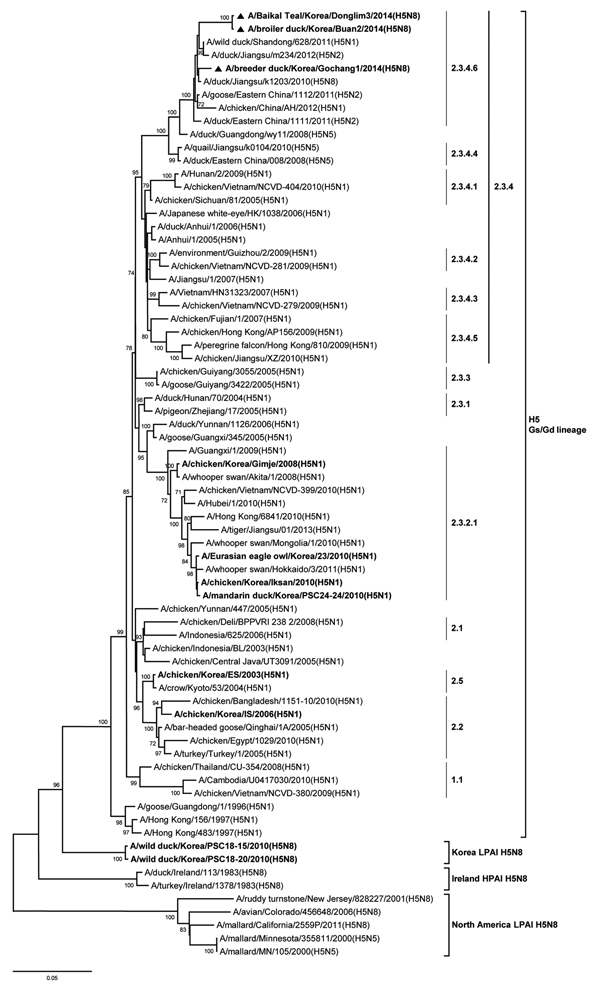Volume 20, Number 6—June 2014
Letter
Novel Reassortant Influenza A(H5N8) Viruses, South Korea, 2014
Figure

Figure. Phylogenetic tree of hemagglutin (HA) genes of influenza A(H5N8) viruses, South Korea, 2014Triangles indicate viruses characterized in this studyOther viruses detected in South Korea are indicated in boldfaceSubtypes are indicated in parenthesesA total of 72 HA gene sequences were ≥1,600 ntMultiple sequence alignment was performed by using ClustalW (www.ebi.ac.kr/Tolls/clustalw2)The tree was constructed by using the neighbor-joining method with the Kimura 2-parameter model and MEGA version 5.2 (www.megasoftware.net/) with 1,000 bootstrap replicatesH5, hemagglutinin 5; Gs/Gd, Goose/Guangdong; LPAI, low pathogenic avian influenza; HPAI, highly pathogenic avian influenzaScale bar indicates nucleotide substitutions per site.
Page created: May 19, 2014
Page updated: May 19, 2014
Page reviewed: May 19, 2014
The conclusions, findings, and opinions expressed by authors contributing to this journal do not necessarily reflect the official position of the U.S. Department of Health and Human Services, the Public Health Service, the Centers for Disease Control and Prevention, or the authors' affiliated institutions. Use of trade names is for identification only and does not imply endorsement by any of the groups named above.